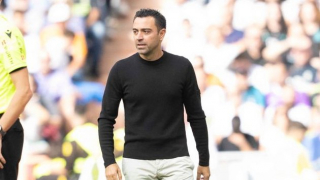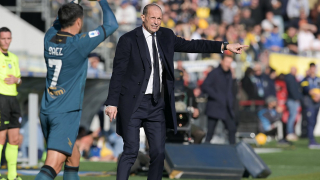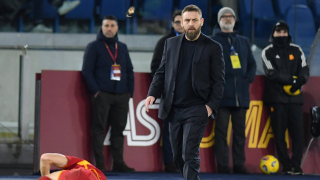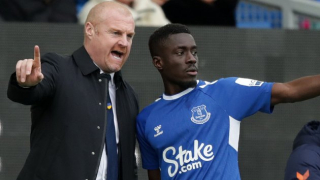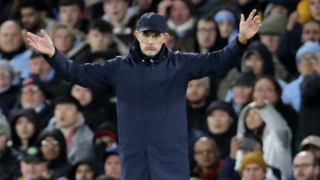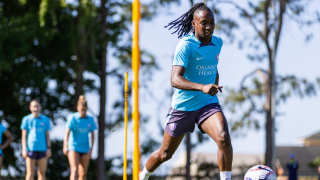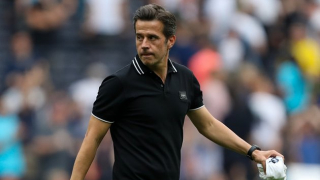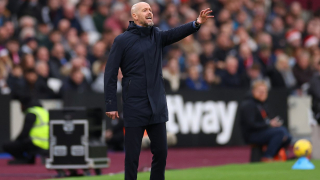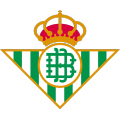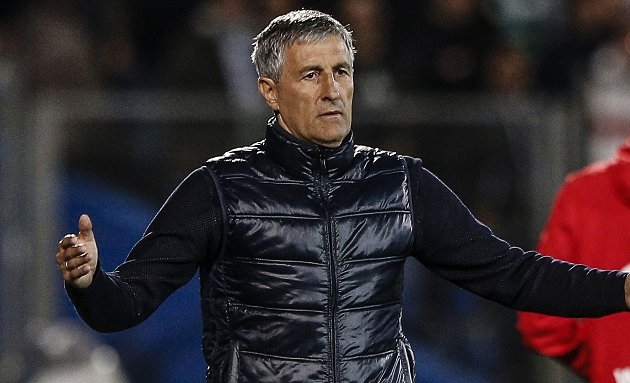Real Betis have been one of the most entertaining teams in Europe this season. Sitting fifth in La Liga, they have traded goals with Spain's best and enjoyed some eye-catching results, including a 1-0 victory away to Real Madrid, a 5-3 derby win over city rivals Sevilla, and a 4-4 draw with Real Sociedad.
Their appointment of Quique Setien as manager last May was the signing of the campaign. The 59-year-old coach had impressed during his time with Las Palmas, keeping the Canary Islanders in the top tier while implementing beautiful football. And, since taking charge of Betis, he has worked similar magic.
Here are the secrets of Betis' success.
CONTROL THE CENTRE
Setien is obsessed with chess. A member of the Torresblancas Chess Club of Santander, he has taken part in several events to promote the board game, and has written columns on the subject in his spare time. He has also played grandmasters Anatoly Karpov and Garry Kasparov. "Playing chess has given me a capacity to analyse and understand football that perhaps I did not have before," he told ABC Sports in 2016.
His approach to football is influenced by this alternative passion; indeed, he believes concepts from the board game can be applied on the pitch. "Chess and football are similar," he once remarked. "The pieces are connected to attack and defence. It is vital to dominate the centre of the board."
The idea of central control is seen in the way his Betis construct attacking moves. Setien likes his side to build possession patiently from the back, with long balls only utilised if absolutely necessary to avoid dangerous turnovers or because there is a genuine attacking opportunity to be exploited through more direct play.
Betis tend to deploy three players in the first line of build-up. Even when they line up in a nominal back four, the deep-lying midfielder – usually Javi Garcia – will drop between the two centre-backs. The extra man allows them access to more angles and areas of the pitch when passing out from the back, and also provides added security in possession.
A central diamond shape is often seen at this stage, with one of the central midfielders taking up a position directly in front of the first build-up line. This formation, which involves four players at three different depths and widths, enables multiple passing lanes, with each player within the formation having three immediate options. This makes it easier for them to resist pressure from the opposition.
An example of this is seen in the graphic above, taken from Betis' 3-0 win over Espanyol. As they lined up in a nominal back three, not a back four, Javi Garcia takes up the position in front of the first build-up line. Fabian Ruiz takes up a similar position to the side of him, while Andres Guardado and Ryad Boudebouz take up higher positions. Consequently Marc Barta, who is on the ball here, has four immediate passing options, as well as two riskier ones.
Thanks to this setup Betis are often able to establish control of the centre and dominate possession. This is backed up statistically by the fact they have the third highest percentages in La Liga for both average possession and pass success, behind only Barcelona and Real Madrid in both categories.
Possession is, however, merely a means to an end for Setien. "I do not play to have possession," he told El Pais in January. "If I could get to the goal much faster I would." The aim of his possession is to penetrate the opposition centrally, which is made easier through the staggering of players on different vertical lines on the pitch.
One example of the benefits this central midfield staggering brings is seen below. Atletico Madrid's midfielders go man-to-man, giving Fabian (circled in green) space between Atletico's midfield and defensive lines. This allows Betis to quickly break through through two lines of pressure.
MOVING PIECES
When discussing the roots of his philosophy, Setien talks about one man more than most. Johan Cruyff, who led the Barcelona 'Dream Team' in the late 1980s and early '90s, is his main footballing influence. "Everything I do has been copied and Cruyff has been the biggest reference," he said last year. "I played against Barcelona and I kept running after the ball and you never got to catch it, you start studying it and you see that's what you like."
Setien, like Pep Guardiola and so many other Cruyff disciples, has taken the concept of 'positional play' and steadfastly refused to sacrifice its principles. With this approach he not only led Lugo into the Spanish second tier for just the second time in their history, but kept Las Palmas in La Liga.
So, what is positional play?
There are numerous articles and videos dedicated to this very subject, though perhaps David Garcia, a UEFA A licensed coach currently working with TOVO Academy, described it most concisely in an article for ESDF Analysis: "For me this can be described as a series of patterns, movements, or actions executed throughout the pitch, in attack and in defence, to correctly and rationally position the team in order to create certain advantages with the ultimate goal of exploiting said advantages."
The advantageous attacking situations positional play generally aims at are as follows:
- Numerical superiority (having more players than the opposition in a certain area),
- Qualitative superiority (having a one-on-one situation in which your player is better than the opposition player), and,
- Positional superiority (occupying positions on the pitch that are difficult for the opposition to defend).
Betis' attacking play shows a clear desire to achieve all three.
Setien's side pass or dribble out from the back with the intention of attracting or provoking pressure from the opposition. This ploy is risky – loss of possession at this stage could lead to a counter-attack near their own goal – but it is carried out nonetheless because Setien believes the potential advantages are worth the risk taken.
As seen below in the win over Girona, Joaquin drops deep to receive the ball during build-up. He comes under pressure from his opposite man, but this pressure frees up space centrally for Fabian, circled below, behind the opposition midfield line. The ball finds Fabian, who is then able to attack with five Girona players eliminated.
Another example of Betis' positional play was seen in their draw away to Atletico Madrid in the movements of Boudebouz. The Algerian operated as an inside forward in this match, generally hovering in and around the right inside channel. This proved troublesome for Atletico, whose two central midfielders and left wing-back were drawn to Betis' two central midfielders and right wing-back respectively.
Boudebouz moved so as to make and take advantage of space in this channel, regularly getting into dangerous positions like the one depicted below, from where he could turn and run diagonally inwards towards the Atletico back line.
In the same match, Setien deployed Cristian Tello – the other nominal inside forward – in a much higher and wider role. This allowed Tello to get into positions where he was isolated up against his opposite man. From there, the player had an obvious one-on-one advantage thanks to his pace and dribbling skill.
KEEP THE OPPONENT GUESSING
In his first season at Betis, Setien has used a grand total of 11 different formations. This, along with the fact he regularly modifies the positions of certain players, makes it difficult to predict how they will line up for a given match.
They have also varied their pressing approach frequently throughout the campaign, tailoring it to the opposition at hand. For instance, away to Real Madrid they went with a low press in which their wingers almost acted as wing-backs in the defensive phase, tracking the Madrid full-backs and forming a back six at times.
Mostly, however, Betis prefer an attacking or a midfield press, both of which is supported by an alert defensive line that actively looks to play the opposition strikers offside. Worryingly for the rest of La Liga, they are becoming increasingly competent without the ball.
They are currently enjoying a six-game clean sheet streak, during which they have picked up five wins and one draw. Their xGA (Expected Goals Against) acts as further evidence of an improved defence – their season average is 1.33 xGA per game, but since March 1 their xGA has dropped to 0.73 per game.
After the draw with Atletico, Setien explained what is behind this resurgence. "In the defensive aspect, since we played with three men back and two on the sides that also help us defend, we are a more mature, aggressive team," he said. "We are more attentive to all defensive actions than we were at the beginning of the campaign."
He's not wrong. With defensive organisation added to their fluid attacking, Betis are now a more complete side. And, having solidified their fifth-place position in La Liga, they could be set to thrill the Europa League next season.



